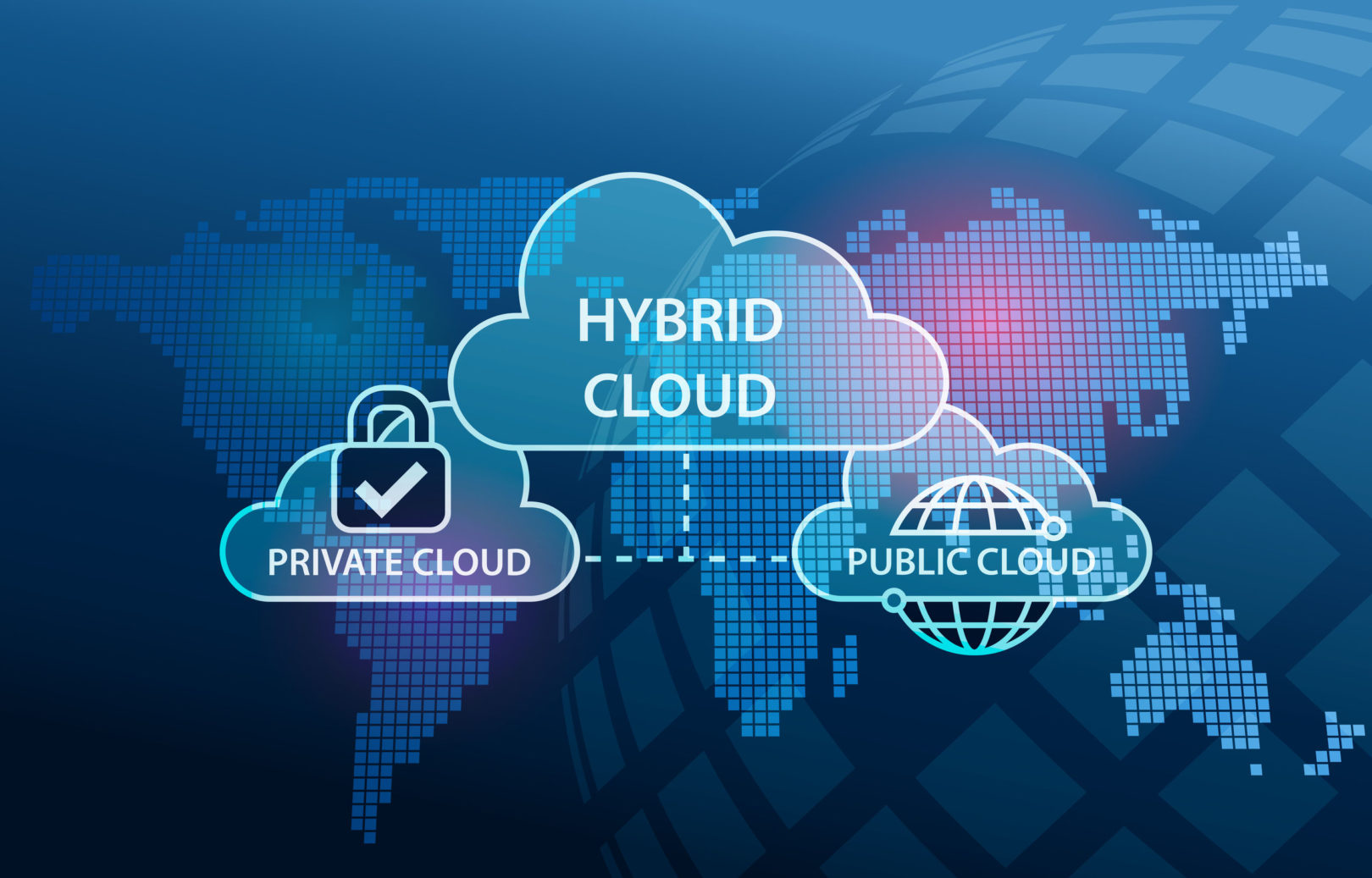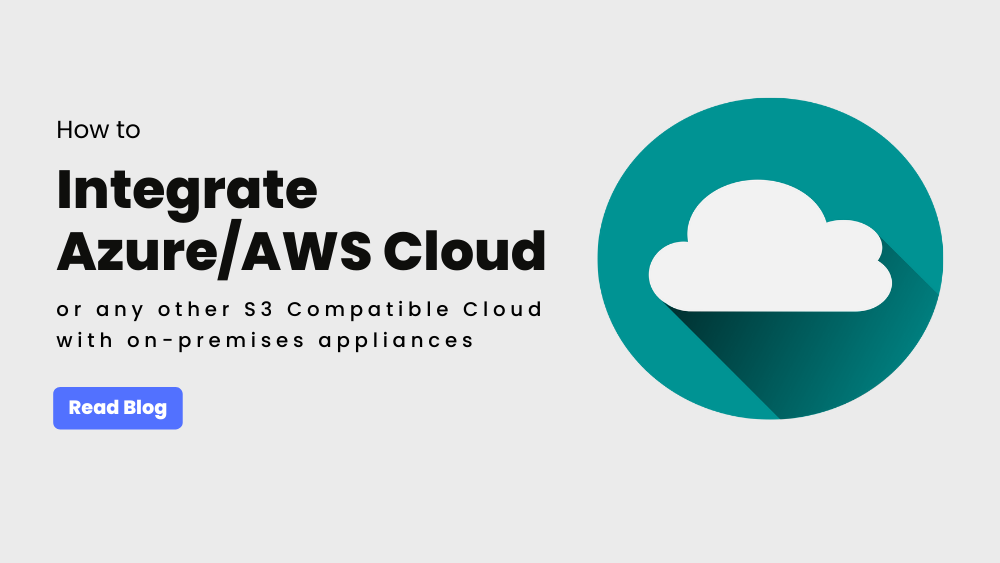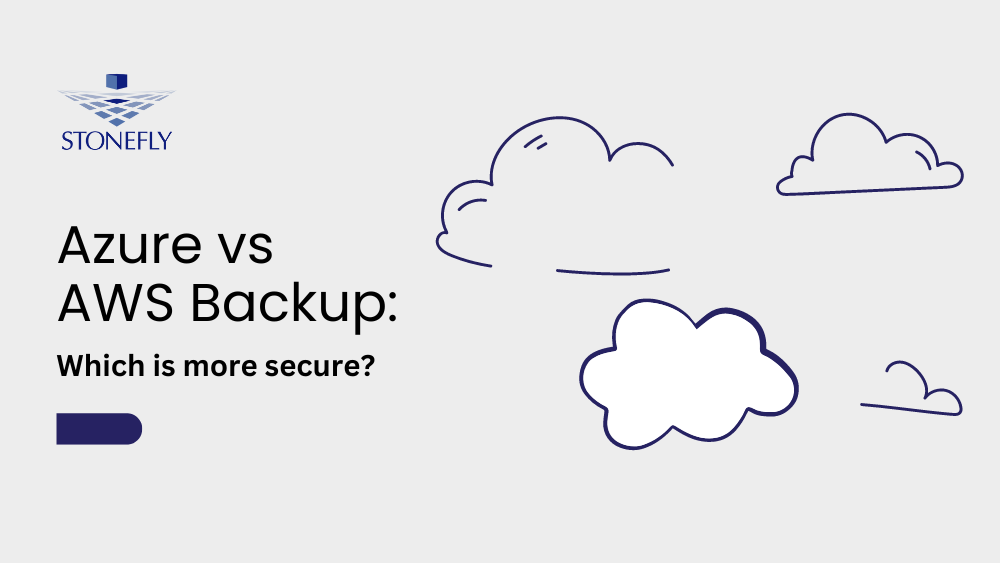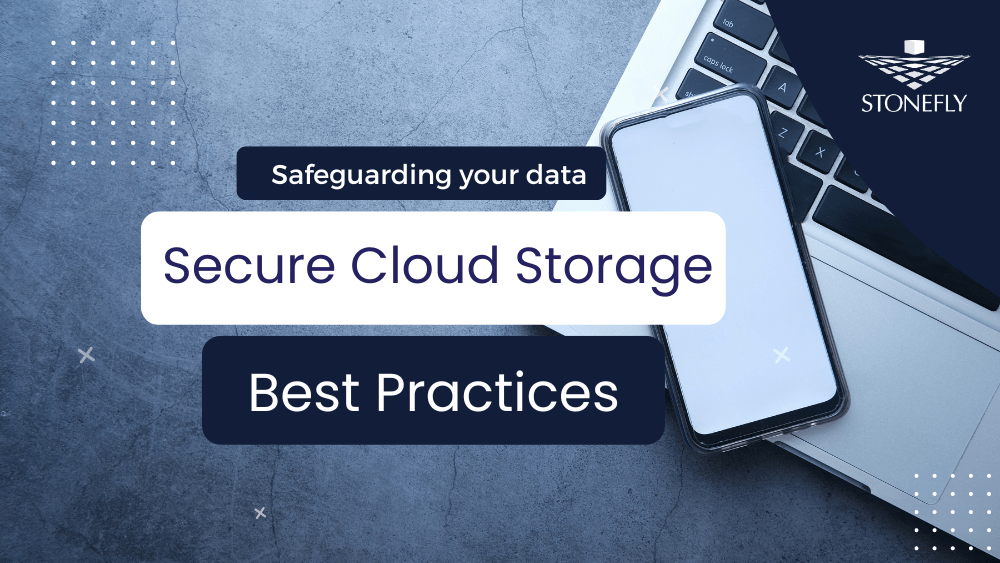Cloud is becoming a very popular space for media entertainment professionals to innovate. Although, cloud computing has not been utilized by enterprises to its full potential. There are a lot of interesting innovations being done in the media entertainment space around storage.
Especially when it comes to the cloud, this industry is really leveraging cloud with the collaborative capabilities and its shared resource space. This has enabled the industry to create bigger projects with more effects resulting in larger projects and finer results. This evolution in the media industry has created bigger challenges regarding deadlines thus incorporating remote employees and collaborative work.
A lot of entertainment companies have turned to the cloud to find a new way to innovate and take advantage of this technology. Historically we’ve seen a lot of success with rendering and things that are more ephemeral. But we have worked with studios to enhance post-production, editing and animation work where artists actually have to do active workflows into the cloud.
What Makes Hybrid Cloud Storage Unique?
So, what makes StoneFly’s AWS hybrid cloud storage unique is being able to help our clients with both large and small studios. We work with studios that are some of the biggest in the world in Hollywood as well as some that have only about 10 or 12 people. The reason is the fact that from the beginning, StoneFly cloud storage was built for the hybrid cloud, which means the file system that people have on-prem, is the exact same file system experience they get in the cloud.
One thing that immediately makes this unique is that we can support NFS or CIFS/SMB and S3 workflows which means you can use all the applications from Adobe, Autodesk to whatever you have, in the cloud just like you would on-premises.
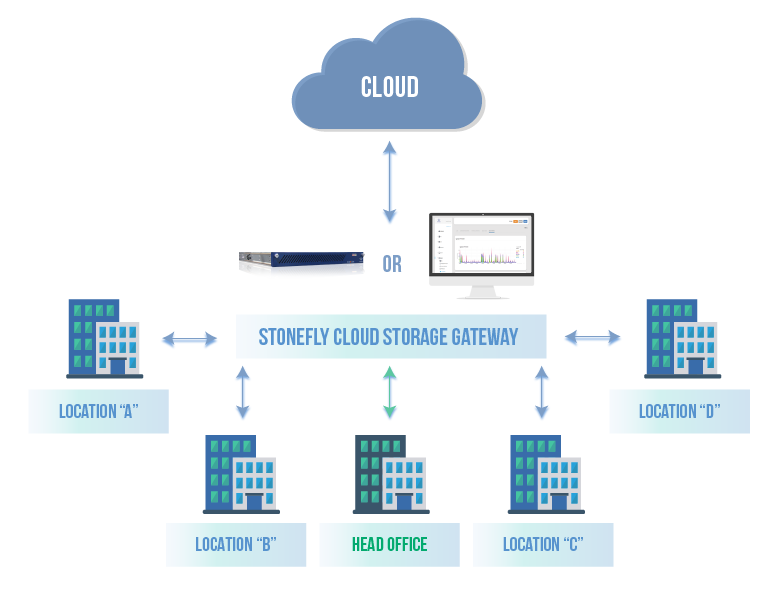
Here is an example of StoneFly cloud storage for AWS or Azure with two remote artists. Let’s suppose that one of the artists is in one city and let’s say a lot of studios of that city have their footprints in the other city. They can connect to the cloud just from a simple desktop here with a mouse. One thing must be clear that all the processing is done entirely in the cloud, and not on premise.
You can imagine spinning up a cluster, you’re working in head office in Los Angeles for example and you could work from home in another city, let’s say location A, B, C or D, on a tablet or something and just simply work remotely. That is going to be very cost effective too because you don’t have to go out and buy massive workstations everywhere as you can leverage what’s already there in the cloud.
Use Cases of Hybrid Cloud Storage
A couple of use cases for this that we’ve seen are;
- When a studio was looking to open up a location in another city. Instead of purchasing data center space, data center gear and servers, they just find a tenant there. They can immediately start working in the cloud, can create a cluster, replicate data from one place to another and collaborate.
- Studios that are not just necessarily opening up a new office but they want to protect against purchasing gear just for a single project for instance with the cyclical nature of having to win bids in this industry can also benefit from it. People can instead move to an OP X model and simply create any size environment in the cloud just for as long as they win a bid.
Define Secure Workspaces in a Shared Cloud Storage
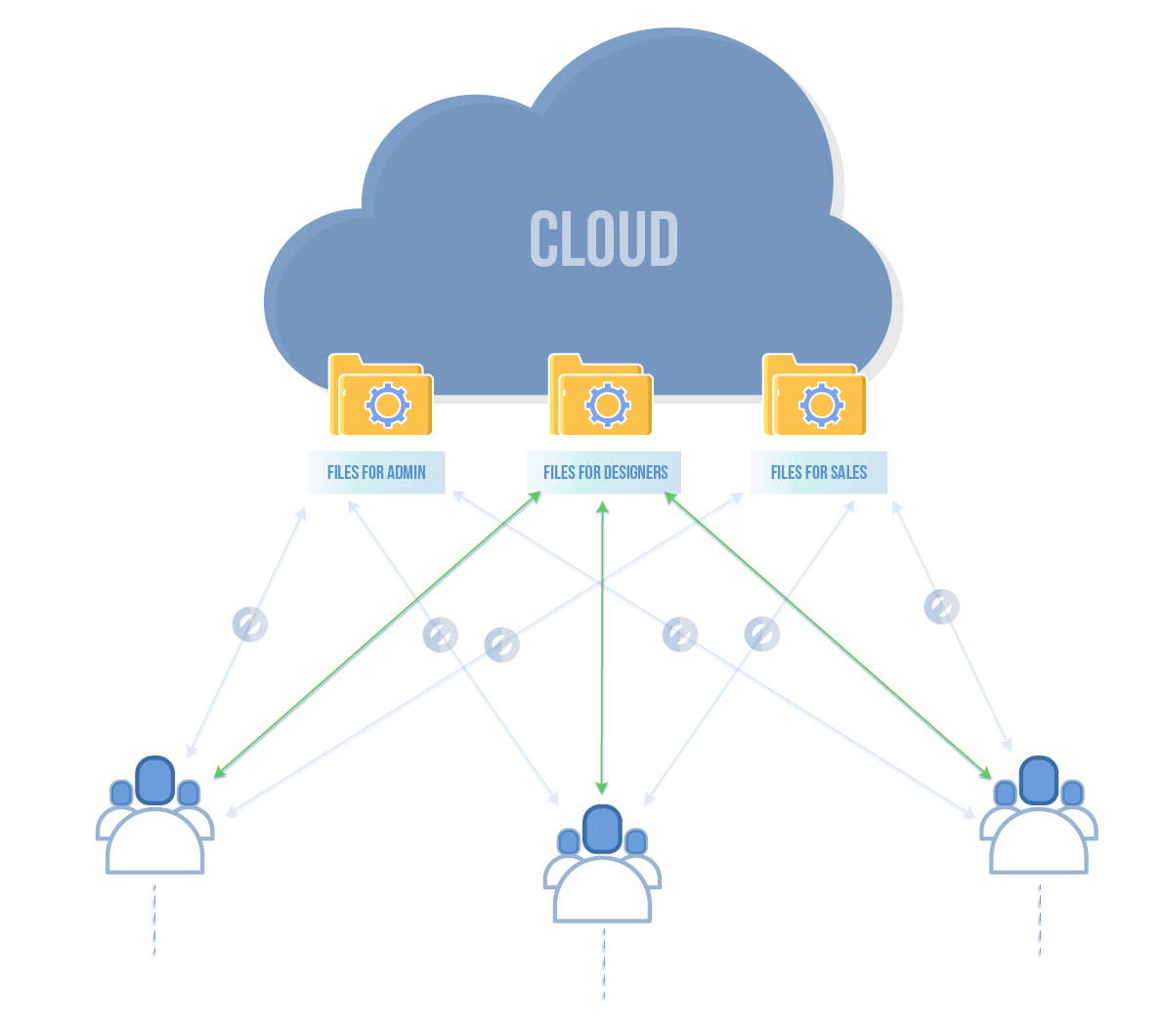
Talking about the security perspective, you can limit what a user can copy down and things like that. So, the fact that we’re built for a hybrid cloud means that all the advanced security things are put in place on-premises have been put into the cloud. It means we have mixed-mode permissions and all sorts of things and quotas.
In real time, you can set quotas against users or you can create permissions. So, you can limit exactly what parts of directories or filesystem certain users can see. You can find the tenant and you don’t have to worry about them necessarily stealing an intellectual property. You can just hire them for exactly what you would like them to do.
Real Time Performance and Reporting
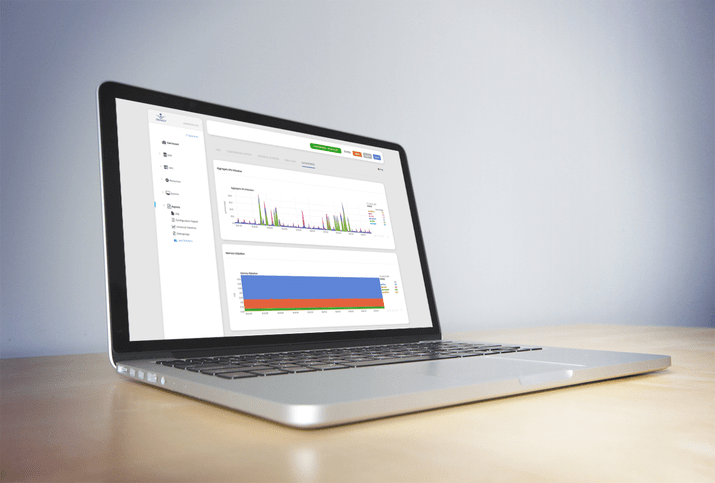
Moreover, with StoneFly hybrid cloud storage, users can have real-time analytics. It adds a tremendous amount of value and especially in the cloud when people hesitate to look at the cloud thinking that could run rampant and my cost could go haywire or whatever. With our real-time analytics, you get instant visibility into your file system and you can tweak in real-time for an editorial workflow where each client needs a certain performance of throughput or head-ops.
You can look at your cluster and see your performance in real time and adjust your compute or your capacity instantly to make sure that all of your users have the right experience. In this way you don’t get those kind of unexpected I/O charges. You don’t have to be over provisioned and can just provision it exactly as you need it to be.
Users could be running StoneFly hybrid cloud solution on-prem as well. This is something which the typical cloud storage providers do not offer as it is offered in hybrid cloud technology exclusively.
Built-in Replication to Move Data between On-Prem and Cloud
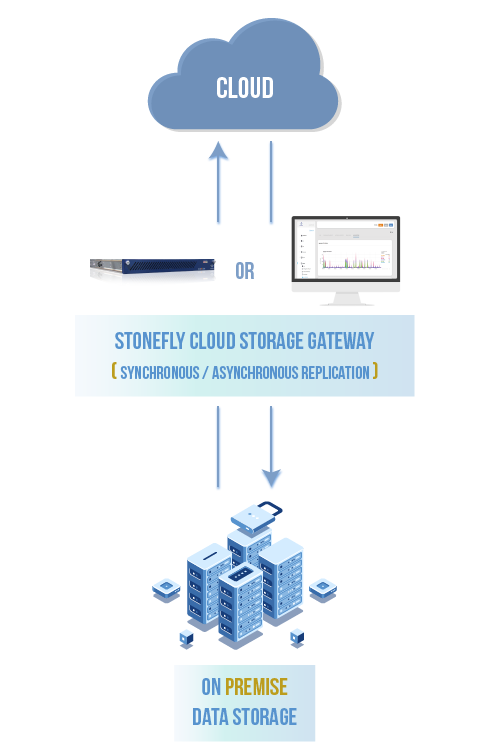
You can take advantage of our built-in replication. You could replicate from your cloud cluster to your on-prem cluster and then you can move projects to the cloud. This has done a lot for transcoding or rendering and things like that where you just need to scale your on-prem infrastructure into the cloud and take advantage of the essentially unlimited capacity of compute in AWS. Then you could replicate it back down but it also allows your headquarters to collaborate with remote artists.
We talked about the value of real-time visibility and the value of hybrid cloud but what about the next-gen customers? This is something we just always like to call out whenever we are talking to anybody about our hybrid cloud storage.
Moreover, when people are moving to the cloud, they look for a little bit of guidance on how to deploy clusters and set up workstations. Whether we’re just working with the customer or actually pulling in some system integrators to have conversations with them and lend their expertise, it’s a next-gen way of enabling them not just from a support perspective but making sure that they’re successful in their cloud endeavor. So, in addition to real-time reporting and analytics, you got real-time support and a complete end to end service.
Conclusion
StoneFly’s hybrid cloud storage enables media and entertainment industry to control their cost, limit data center footprint and fully leverage the compute and storage capacity of AWS cloud.
We can help you build a truly collaborative space in AWS. Start Today
To get a free trial and schedule a demo to experience the StoneFly advantage,
Contact Us
Email: sales@staging.stonefly.com
Phone: +1 (510) 265 1616
Follow Us on Social Media
Twitter: @stoneflyinc
Facebook: facebook.com/stoneflyinc
Youtube: youtube.com/stoneflyinc
Linkedin:linkedin.com/company/stonefly-networks
